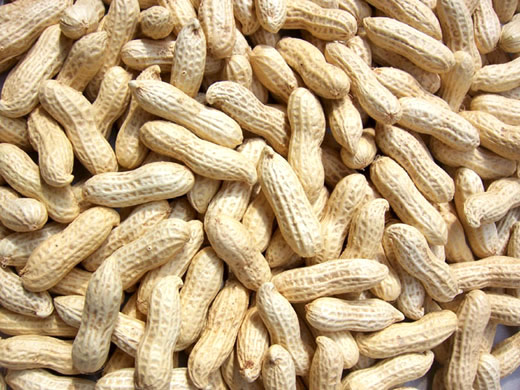
|
||||||||||||||||||||||||||||||||||||||||||||||||||||||||||||||||||||||||||||||||||||||||||||||||||||||||||||||||||||||||||||
Acceptable, affordable, healthy and tasty; these four words are not often used together. For describing of these small peanut kernels, you can use all of these words and more. Peanuts are very nutritious; it has a high energy value. Just only a handful of peanuts are an excellent source of protein and fiber for the day. The peanut is unusual because it flowers above the ground, but fruits below the ground. It actually starts to grow like a flower, which due to its heavy weight leans toward the earth. Flower finally digs into the ground where the fruits ripen peanuts. China has a long peanut cultivation history. Peanuts has become one of the most important oilseed crops in China, and its production has increased steadily since the 1980s, and since 2006 China became the largest producer of peanuts in the world. Today, China is leading in volume of peanut production, followed by India and the USA. Peanut is an important industrial and oil seeds in China. It is grown for the domestic market and for export. Peanuts are popular not only as a source of protein and peanut butter; it also appreciated the food and medical industries. More than 5 million hectares in China planted to peanuts; this is about 19% of the world (according to the United Nations' Food and Agriculture). Chinese peanut is planted in the sandy soil in April or May when the soil temperature is about +18-20 C degrees. Depending on the variety and the region, 120 to 165 frost free days are required for a good crop. In China peanuts are harvested from August through November, when peanuts are ripe. Harvesting of peanut is done by hand. The plants together with the peanut shells are left on the ground for two or three days to be dried in the sun to remove the moisture, then farmers separate the peanut shells from foliage and stems and further dry in the sun until the moisture is reduced to 8-10 percent for safe storage and transportation.
Peanuts are grown in the warm climates of Asia, Africa, Australia, and North and South America. China and India together account for more than half of the world's production. Other major peanut growing countries include Senegal, Sudan, Brazil, Argentina, South Africa, Malawi, and Nigeria. In China, these are the major peanut producing provinces: Henan, Shandong, Liaoning and Hebei. Types of Peanuts Although peanuts come in many varieties, there are four basic market types: Hsuji Type, Virginia Type, Valencia Type and Ji You 4 Type. Each of the peanut types is distinctive in size, flavor, and nutritional composition. Hsuji Type: Hsuji type has attractive, uniform kernel size and a round to oval shape, mainly used for peanut butter. Hsuji type is grown mainly in Shandong, Liaoning, Hebei, Henan and Anhui Province. Virginia Type: Virginias have the largest kernels and account for most of the peanuts roasted and processed in-the-shell. When shelled, the larger kernels are sold as snack peanuts. Virginias are grown mainly in Henan, Shangdong and Hebei. Valencia Type: Valencia usually have three or more small kernels to a pod and are covered in a bright-red skin. They are very sweet peanuts and are usually roasted and sold in-the-shell. They are also excellent for fresh use as boiled peanuts; they are mainly grown in Northeast China. Ji you 4 Type: It usually has three giant kernels to pod. They are sweat and are usually roasted and sold in shell. They are mainly grown in Hebei and Henan Provinces. Within each four basic types of peanuts, there are several "varieties" for seed and production purposes. Each variety contains distinct characteristics which allow a producer to select the peanut that is best suited for its region and market.
Specification: A) Large type peanut kernels
B) Round type peanut kernels
C) Red peanut kernels
D) Blanched peanut kernels
E) Raw washed peanut in shell
|
||||||||||||||||||||||||||||||||||||||||||||||||||||||||||||||||||||||||||||||||||||||||||||||||||||||||||||||||||||||||||||
|
||||||||||||||||||||||||||||||||||||||||||||||||||||||||||||||||||||||||||||||||||||||||||||||||||||||||||||||||||||||||||||
|
||||||||||||||||||||||||||||||||||||||||||||||||||||||||||||||||||||||||||||||||||||||||||||||||||||||||||||||||||||||||||||
